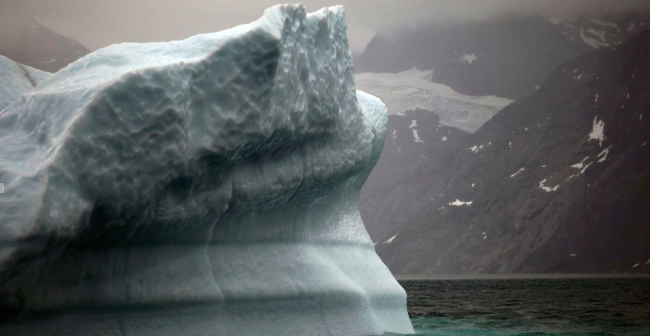
A new scientific survey has found that the glaciers of the Arctic are the world’s biggest contributors to rising seas, even though the Antarctic contains far more ice.
However, the biggest problem is that both ice regions appear to be accelerating their losses—suggesting that we could be in for an even faster rate of sea-level rise in future decades. Seas are rising by about three millimeters each year, according to NASA. That’s mainly driven by the Arctic contribution, the Antarctic and a third major factor—that ocean water naturally expands as it warms.
“For Arctic ice loss, the rate has become faster since 1986,” said Jason Box, first author of the new study. “So it clearly shows an acceleration of the sea-level contribution. The Antarctic will probably take over at some point in the future, but during the past 47 years of this study, it’s clear that the Arctic is the largest contribution of land ice to sea-level rise.” The total Arctic loss at present is 447 billion tons of ice per year—which is about 14,000 tons of water per second. That’s for the period between 2005 and 2015. Between 1986 and 2005, the loss is around 5,000 tons per second—therefore, the rate has almost tripled.
Assuming these numbers are correct, the polar regions are losing about 666 billion tons of ice to the ocean each year—reaching a little bit less than two millimeters of sea-level rise every year. “With respect to the present rate of ice mass loss, it is Greenland that has the most significant rate of increased mass loss in the present day,” Larsen said, a glacier expert at the University of Alaska. “If you take the 7.7 billion people on Earth and divide the present-day numbers, from 2005 to 2015, each person on Earth would have 160 liters per day, every day, every year,” Box said.
本时文内容由奇速英语国际教育研究院原创编写,未经书面授权,禁止复制和任何商业用途,版权所有,侵权必究!(作者投稿及时文阅读定制请联系微信:400-1000-028)
1.Which of the following can't explain the reasons of faster sea-level rise?
A The ice in the Arctic is melting faster.
B The Antarctic has much more ice than the Arctic.
C The Antarctic is accelerating its ice loss.
D The ocean water expands when it warms.
解析:选B。细节理解题。根据第二段最后一句That’s mainly driven by the Arctic contribution, the Antarctic and a third major factor—that ocean water naturally expands as it warms.可知导致海平面迅速上升的因素主要有三个:北极和南极冰川的消融以及海水变暖后的膨胀。故选B。
2.How long did the scientists spend on this study?
A 10 years.
B 47 years.
C 19 years.
D 29 years.
解析:选B。细节理解题。根据第三段第三句The Antarctic will probably take over at some point in the future, but during the past 47 years of this study, it’s clear that the Arctic is the largest contribution of land ice to sea-level rise.可知科学家们进行了47年的研究。故选B。
3.The underlined word “tripled” in the third paragraph means “_______”.
A increased three times
B decreased three times
C increased four times
D decreased four times
解析:选A。词义猜测题。根据第三段第四、五句的which is about 14,000 tons of water per second. That’s for the period between 2005 and 2015.可知2005年到2015年期间的消融速度是每秒14000吨;而结合下句的Between 1986 and 2005, the loss is around 5,000可知在1986年到2005年期间,其速度为每秒5000吨;据此可以推知消融速度几乎是原来的三倍。故选A。
4.What can we get from Box’s words in the last paragraph?
A People on Earth have enough drinking water.
B Each person drinks a lot of water every day.
C The amount of ice mass losses in both polar regions is really large.
D The large population on Earth needs a large amount of water.
解析:选C。推理判断题。根据第四段第一句Assuming these numbers are correct, the polar regions are losing about 666 billion tons of ice to the ocean each year—reaching a little bit less than two millimeters of sea-level rise every year. 可知他说的话是将冰川消融的数量进行了量化,旨在强调两极冰川的消融数量极大。故选C。